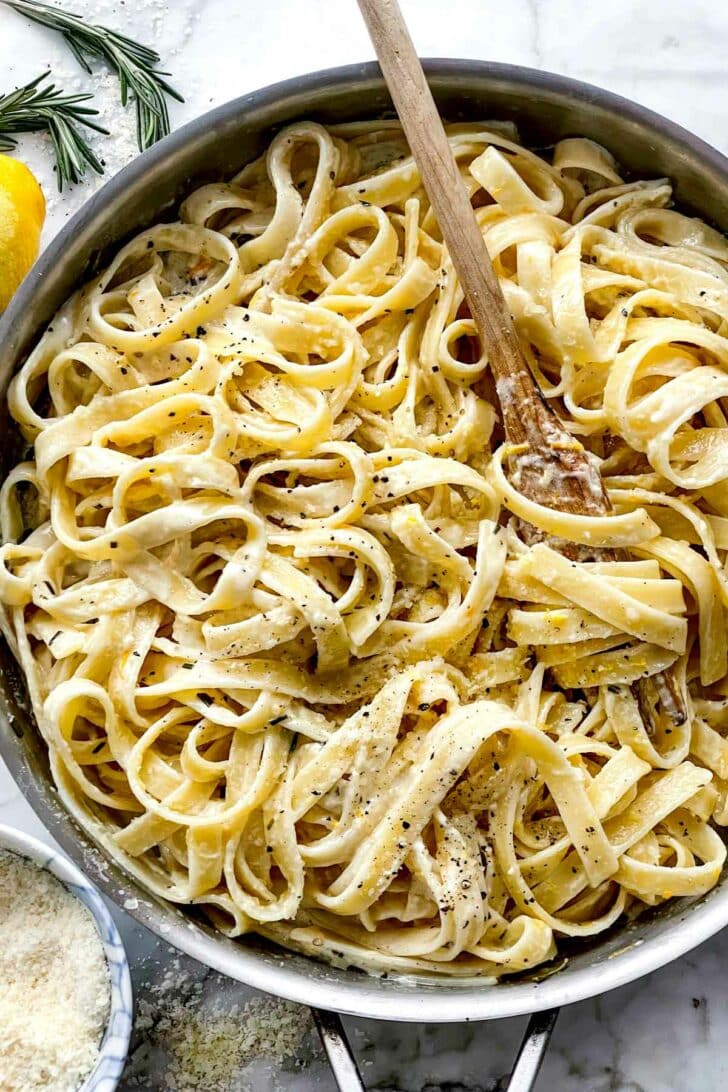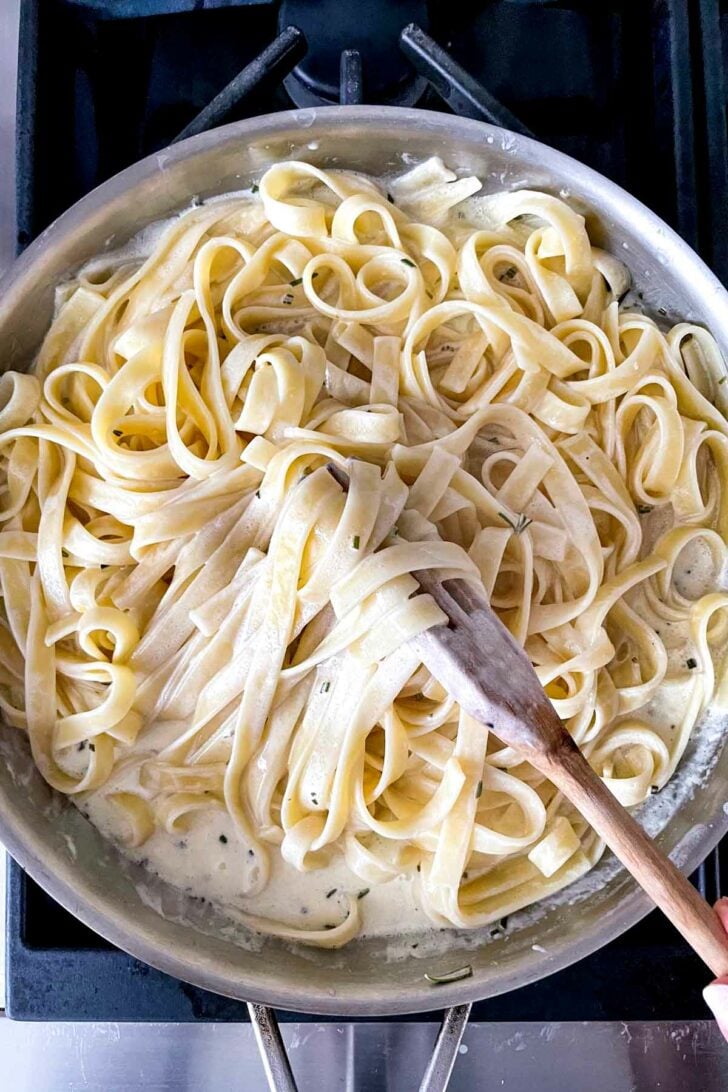Classic fettuccine alfredo gets a bright and herbaceous makeover, thanks to Meyer lemons and rosemary, in this super simple, wonderfully creamy pasta dish.

advertisement
For as long as I can remember, I’ve been a lemon lover which became even more intense after living in sunny California with the Meyer lemon tree I planted in my yard. Still today, I’ll choose Meyer lemons over regular lemons and try to keep them stocked in my fridge. Meyer lemons are in a league of their own. Meyer lemons are significantly sweeter and deliver half the pucker power as their grocery store relations, more of a cross between a mandarin orange and a lemon. They’re smaller and more round, with a smooth, thin rind and hardly any pith. They’re the star of the show in my lemon bars recipe, and edible sunshine in my favorite arugula salad, hearty dinners like my saucy chicken and mushrooms, or my favorite lemon chicken stew.
This lemony spin on fettuccine alfredo also has L.A. roots, where years ago I savored a version called Tagliolini al Limone at a restaurant called Angelini Osteria. With only 6 ingredients the lush communion of lemon, cream, rosemary, and Parmesan cheese enveloping al denté pasta is sublimely simple yet absolutely magical.

Advertisement
What’s in Lemon Fettuccine Alfredo
This luscious, lemony pasta only has 6 ingredients (not including salt and pepper). Here’s what you’ll need:
- Fettuccine—you could also use another long, wide type of pasta like tagliatelle or pappardelle
- Cream—you could use half and half, but I don’t recommend using milk, as the sauce won’t be nearly as creamy
- Butter
- Fresh rosemary—thyme or basil would also be delish
- Meyer lemon—you’ll use the zest and the juice
- Parmesan cheese —make sure you grate it fresh for the most flavor
- Kosher salt and freshly ground black pepper

Advertisement
How to Make Lemon Fettuccine Alfredo
Al denté is the only way. This is my pasta philosophy forever and always, but it’s especially important in this recipe because the pasta will continue to cook a bit in the sauce, releasing gluten to thicken the sauce. Cooking the pasta beyond that will definitely ensure it overcooks in the sauce, resulting in too thick and gloopy a texture. No one wants mushy pasta or gloopy sauce.
While the pasta cooks, make your sauce. Pour the cream into a large skillet with the butter and lemon juice. Turn the heat to medium-high and cook until the butter melts and bubbles form. Stir to combine, add the minced rosemary, and reduce heat to a simmer.

Advertisement
Sauce Those Noodles
Drain, toss, season, and repeat. Drain the noodles, but do not rinse (you want all that starchy goodness for your sauce!). Remove the cream sauce from the heat and add the noodles to the pan, tossing to coat the pasta thoroughly. Add the parmesan cheese, lemon zest, kosher salt, and pepper to the cream and toss again.
Thicken and serve. Place the pan back on the burner over low heat and toss until the sauce thickens about 1-2 minutes. Serve with more Parmesan cheese and more fresh zest of lemon.
PRO TIP: If you find that your sauce is too thick, simply add a dash more cream or more reserved pasta water.

What is Special About Meyer Lemons?
Meyer lemons were first introduced to the United States via China, in the early 20th century. Meyer lemons are sweeter, more fragrant, and less acidic than regular lemons, and also boast lovely floral notes. One of the things that makes them so special is they aren’t as easy to find—often only in season December-May.
Advertisement

advertisement
How to Plate Pasta
The traditional way to plate pasta takes two kitchen utensils: A long-tined fork or tongs and a ladle. Gather a batch of noodles with the fork or tongs then twist in the ladle to form a nest then transfer to a plate. Wa-la! Pasta like a pro!





